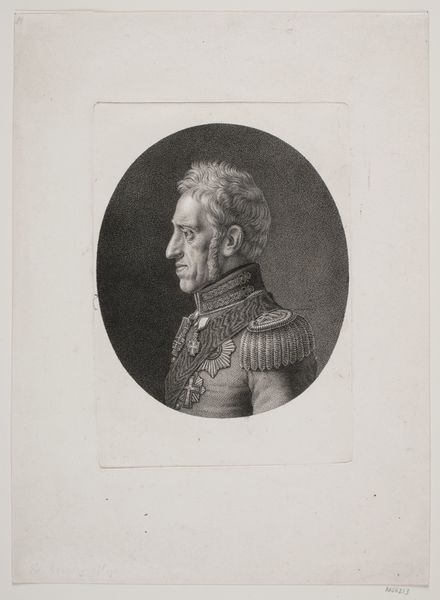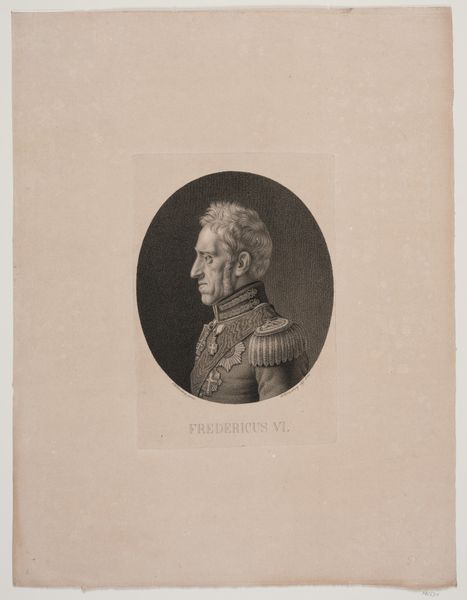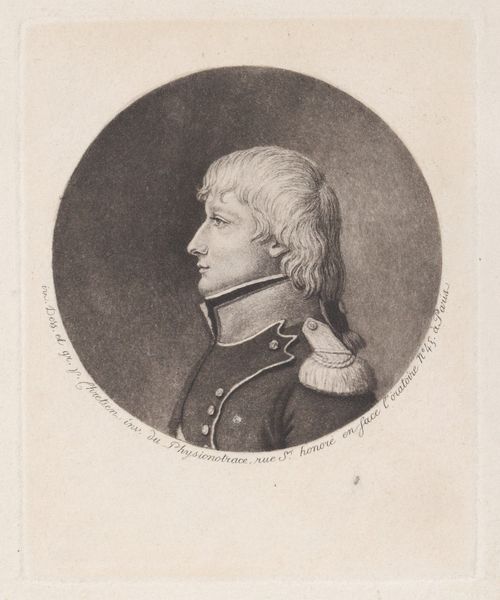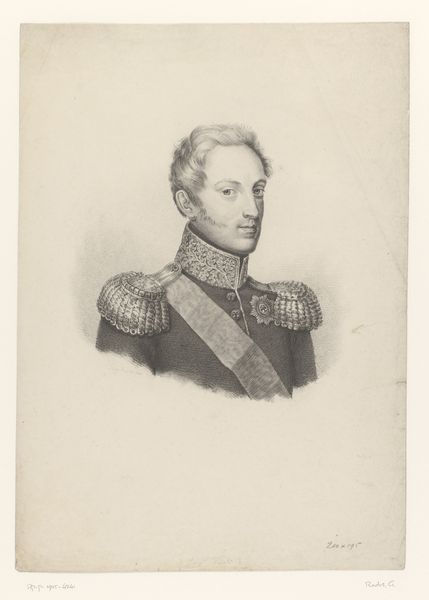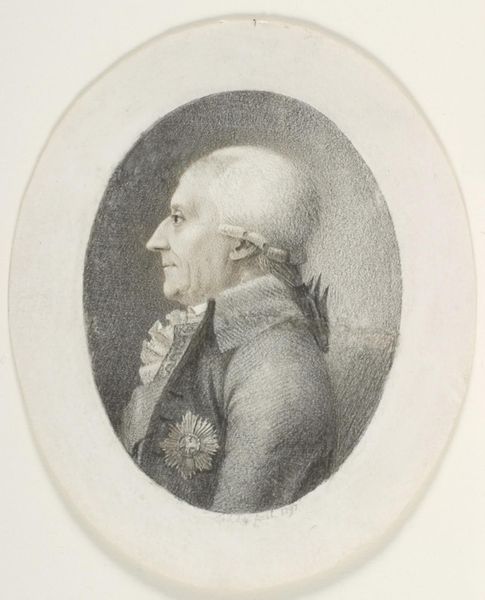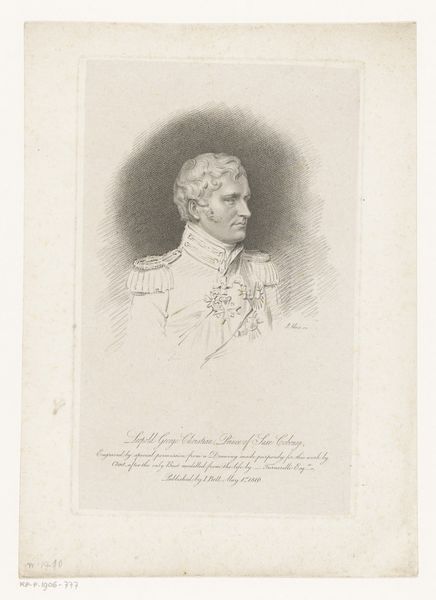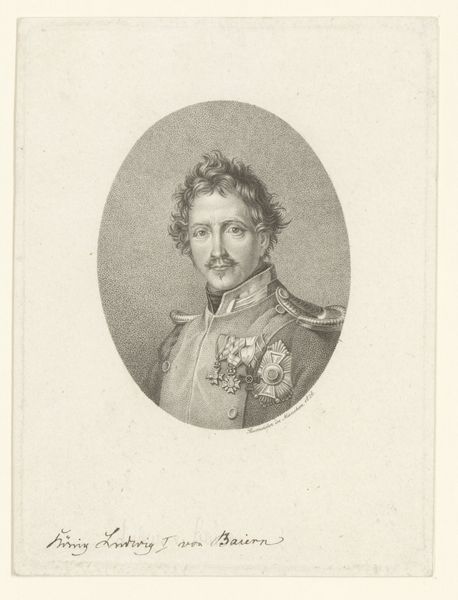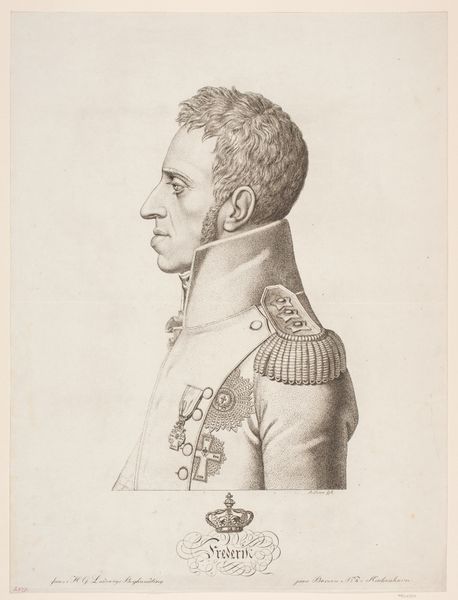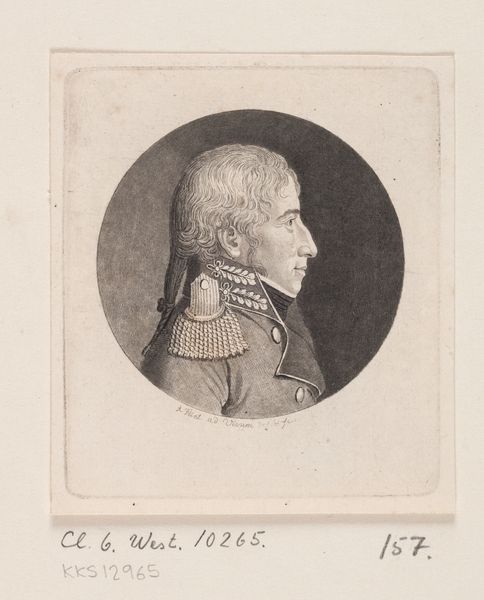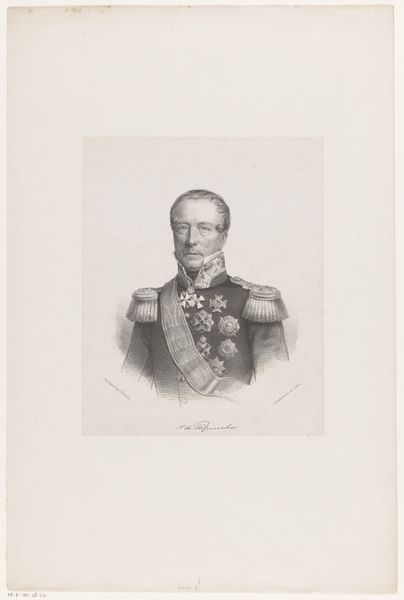
print, engraving
#
portrait
#
pencil drawn
#
neoclacissism
#
negative space
# print
#
pencil sketch
#
charcoal drawing
#
pencil drawing
#
academic-art
#
engraving
Dimensions: 183 mm (height) x 126 mm (width) (plademaal)
Curator: At first glance, the engraving seems both imposing and surprisingly fragile, doesn't it? Editor: It does. There’s a stillness and gravity about it, fitting for a portrait of a monarch, yet the delicate lines convey a certain vulnerability. We're looking at Erling Eckersberg's 1846 portrait of Frederik VI. Curator: Eckersberg produced this print long after Frederik VI's death in 1839. The image testifies to the enduring need for representation and idealization of the Danish monarchy. The choice to create a printed image allowed for wider circulation and solidified his iconic image. Editor: It’s interesting how certain symbols remain powerful. Here, the oval format suggests a classical cameo, an immediate link to notions of antiquity, and thus stability. What do you make of his ornamentation? He is almost hidden by decorations and honor crosses, it is difficult to even see his uniform. Curator: Exactly, and this overwhelming ornamentation reflects the political climate of the time. It's important to remember that during Frederik VI's reign, Denmark underwent significant political changes, including the loss of Norway in 1814. So the visual emphasis on royal regalia reinforces ideas of power, legacy, and unbroken tradition to reinforce and to perhaps obscure a somewhat chaotic political present. Editor: Yes, the symbols help to legitimize the current ruler. Note that the King is rendered in profile. On a symbolic level, it reminds me of a Roman emperor depicted on a coin, linking him to a tradition of leadership and empire-building. It lends a sense of timelessness. Curator: I see what you mean! Eckersberg utilizes the visual vocabulary of Neoclassicism—clarity, order, a focus on line—to create a very specific kind of public image for Frederik VI. It is carefully manufactured through accessible images. Editor: Overall, the image is intriguing in the way it merges political aims with artful representation. What do you take away from the image? Curator: I am fascinated by how it represents not just the king, but the anxieties and aspirations of an entire era. It demonstrates the vital role visual culture plays in constructing and reinforcing power. Editor: And I think it shows how enduring symbols continue to subtly shape our understanding of history and leadership, even today.
Comments
No comments
Be the first to comment and join the conversation on the ultimate creative platform.
